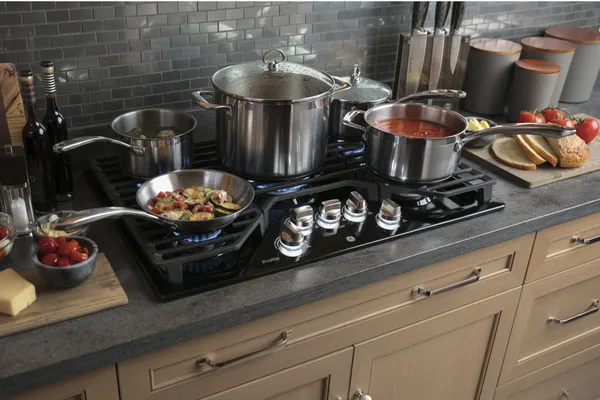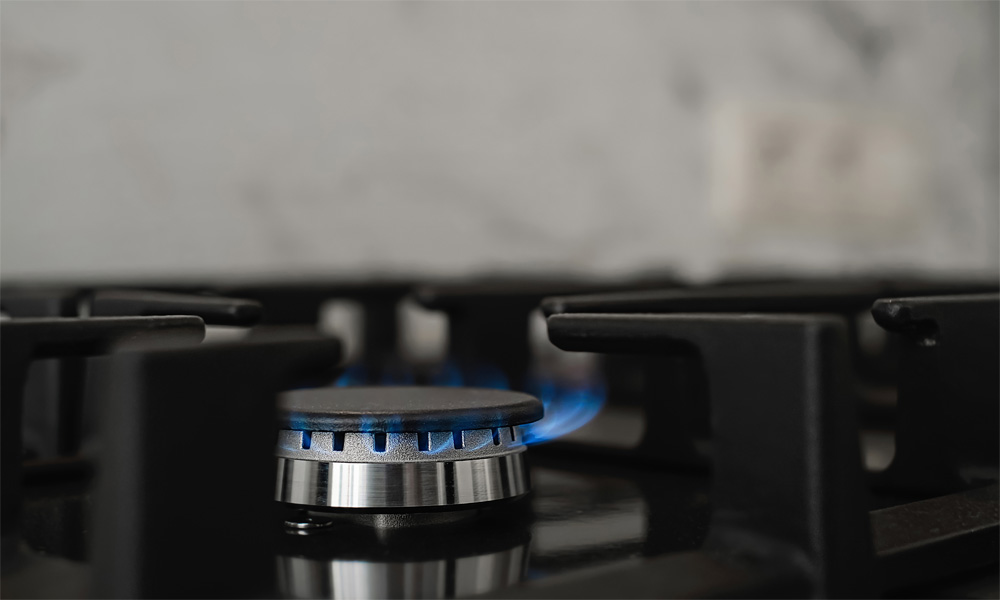If you have a small kitchen or limited counter space, a narrow gas cooktop could be the perfect solution. These compact cooktops deliver powerful cooking performance without taking up as much room as traditional cooktops. However, when choosing the right one, there are several factors to consider. The size, burner configuration, and features all play a role in making the best choice for your needs. In this guide, we’ll walk you through what to keep in mind when selecting a narrow gas cooktop for your home.
What is a Narrow Gas Cooktop?
A narrow gas cooktop is a compact cooking appliance designed to fit into smaller kitchen spaces, usually between 12 inches and 24 inches wide. These cooktops can offer the same functionality as a traditional gas stove but in a more space-efficient form. While they typically have fewer burners, they still provide the cooking power and versatility you need for everyday meals or cooking smaller batches.
Narrow gas cooktops are great for apartment kitchens, studio apartments, or homes with limited counter space. They combine the power of gas cooking with the convenience of a slim profile, so you don’t have to compromise on cooking performance.
How to Choose the Right Size for Your Narrow Gas Cooktop
Choosing the right size is critical because it will ensure that your cooktop fits well in your kitchen and provides the cooking space you need. Here’s what you need to consider:
-
Measure Your Available Space
Before purchasing, measure the width and depth of the space where you plan to install the cooktop. Consider any cabinets, walls, or other obstructions around the area that may limit the available space. Narrow cooktops typically come in 12-inch, 15-inch, 18-inch, and 24-inch widths, so you’ll want to pick a size that fits comfortably.
-
Consider the Number of Burners
Smaller cooktops usually come with 2 to 3 burners, while larger models (up to 24 inches) can accommodate up to 4 burners. If you often cook multiple dishes at once, you may want to opt for a model with 3 or 4 burners. However, if your cooking needs are more modest, a 2-burner cooktop will likely suffice and save space.
-
Evaluate Cooking Capacity
Even if the cooktop is narrow, consider your typical cooking habits. If you frequently prepare large meals, a wider model (such as a 24-inch cooktop with 3 or 4 burners) may be more practical. On the other hand, for simple meals and occasional cooking, a smaller cooktop should meet your needs.
Choosing the Right Burner Configuration

The configuration of the burners affects how easily you can cook multiple dishes at once. Here are the key configurations to consider:
-
Linear Configuration
In this common configuration, the burners are placed in a straight line, typically across the width of the cooktop. It’s a straightforward design and is typically seen in smaller, more budget-friendly cooktops.
-
Staggered Configuration
A staggered burner configuration places the burners at different levels, allowing more flexibility in cooking with larger pots and pans. This configuration helps avoid overcrowding and allows you to use multiple burners at the same time with ease.
-
Side-by-Side Configuration
In this configuration, the burners are arranged next to each other horizontally, which is great if you prefer cooking in close proximity. However, this might not leave enough space between the burners for large pots, so it’s worth considering your cookware size.
-
Dual-Zone Burners
Dual-zone burners allow you to adjust the heat level across a single burner. This makes them versatile for cooking tasks that require a range of heat levels, from simmering to boiling or searing.
Types of Burners and Their Functions
Choosing the right type of burner can enhance your cooking experience. Here are the most common burner types found in narrow gas cooktops:
-
Standard Burners
These are the most common burners and work well for everyday cooking tasks like boiling, frying, and sautéing. They offer reliable performance but may not provide the high heat needed for searing or wok cooking.
-
Power Burners
Power burners provide higher heat output, ideal for tasks like searing meat or boiling large pots of water quickly. If you frequently cook dishes that require high temperatures, a power burner may be a good investment.
-
Simmer Burners
Simmer burners are designed for low, even heat, making them perfect for delicate tasks like simmering soups, sauces, or melting chocolate. If you do a lot of slow cooking, consider a cooktop with a dedicated simmer burner.
-
Wok Burners
If you enjoy stir-frying or cooking with a wok, some narrow gas cooktops come with a wok burner. These burners are powerful and can reach higher temperatures quickly, making them ideal for fast cooking techniques like stir-frying.
Key Features to Consider in a Narrow Gas Cooktop
When choosing a narrow gas cooktop, consider the following features to enhance your cooking experience:
-
Electronic Ignition
Most modern gas cooktops use electronic ignition systems, which eliminate the need for a pilot light. This is more energy-efficient and reduces the risk of gas leaks, as the ignition happens automatically when you turn on the burner.
-
Safety Features
Look for cooktops with safety features like flame failure protection. This feature automatically shuts off the gas supply if the flame goes out, preventing potential gas leaks. Additionally, some cooktops have child safety locks to prevent accidental activation.
-
Continuous Grates
Grates that span across the entire cooktop allow you to easily slide pots and pans from one burner to another without lifting them. This is especially helpful if you’re juggling multiple dishes at once.
-
Easy-to-Clean Surfaces
Gas cooktops can get messy, especially if you’re doing a lot of frying or boiling. Look for a model with smooth, easy-to-clean surfaces made from stainless steel or enamel. Some cooktops also have sealed burners to make cleaning up spills easier.
-
Heat Control Precision
Look for cooktops that offer precise heat control, such as knobs or digital controls with clear settings. This is especially important for dishes that require consistent heat, like simmering or slow cooking.
Aesthetic Considerations for Your Kitchen
When selecting a narrow gas cooktop, consider how it will look in your kitchen. These cooktops come in various finishes, including stainless steel, black, or white, so choose one that complements your kitchen’s style. A sleek, minimalist design can help make your kitchen feel modern, while a more traditional design may blend well in a classic kitchen.
Installation Requirements and Considerations
Before purchasing your cooktop, check the installation requirements. Most gas cooktops need to be connected to a gas line and require proper ventilation to ensure safe operation. If your kitchen isn’t already set up for gas, you may need to hire a professional to handle the installation.
Additionally, narrow gas cooktops often need clearance space around them to prevent overheating. Be sure to read the manufacturer’s guidelines for installation to ensure proper safety and efficiency.
How to Budget for a Narrow Gas Cooktop
The price of narrow gas cooktops can range from $200 to over $1,000, depending on the size, brand, and features. Budget-friendly models typically offer basic features, while higher-end models come with additional features such as dual-zone burners, sleek designs, and enhanced safety systems. Be sure to consider both the upfront cost and potential installation expenses when planning your budget.
Top Brands and Models of Narrow Gas Cooktops
Several well-known brands offer narrow gas cooktops, including:
- Bosch – Known for high-quality materials and precise cooking controls.
- GE – Offers a wide range of sizes and configurations, ideal for different cooking styles.
- Frigidaire – Provides budget-friendly options with reliable performance.
- KitchenAid – Known for its durable, sleek designs and versatile burner configurations.
Explore customer reviews and expert opinions to find the best brand and model that fits your needs.
Conclusion: Finding the Right Narrow Gas Cooktop
Choosing the right narrow gas cooktop depends on your kitchen space, cooking needs, and budget. Focus on the size, burner configuration, and features that best suit your cooking habits. A narrow gas cooktop can be an efficient, stylish solution for smaller kitchens without compromising on cooking performance. By considering these factors, you’ll be well on your way to selecting the ideal cooktop for your home.
FAQs
-
Can a narrow gas cooktop replace a full-sized stove?
Yes, a narrow gas cooktop can serve as a replacement for a traditional stove, especially if you have limited space and only need to cook small to medium-sized meals.
-
How do I clean a narrow gas cooktop?
After cooking, let the cooktop cool down, then wipe it with a damp cloth. Use a non-abrasive cleaner for tougher stains, and ensure the grates and burners are thoroughly cleaned.
-
Are narrow gas cooktops energy-efficient?
Yes, narrow gas cooktops tend to be energy-efficient, especially with features like electronic ignition and burners designed to heat quickly and evenly.
-
Can I use a narrow gas cooktop with a wok?
Yes, many narrow gas cooktops offer wok burners or powerful burners that are ideal for stir-frying and cooking with a wok.
-
How do I know if a narrow gas cooktop will fit in my kitchen?
Before purchasing, measure the installation space carefully and compare it to the dimensions of the cooktop to ensure a proper fit.








